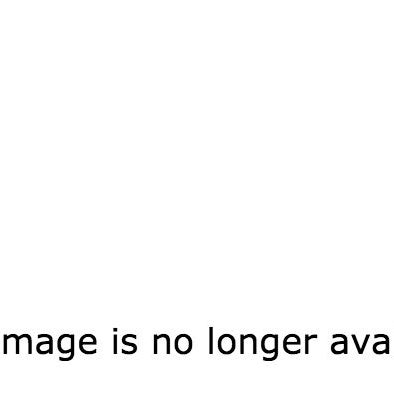
Getting a tattoo requires a lot of preparation and strength of will. I should know – I recently had my third one and documented the process to tell the world a little bit more about what goes into getting inked, from choosing a design and what hurts most to how to keep healthy while you heal.


Decide what you want and where you want it.



Whether it's a favourite animal, gorgeous design, or homage, you should feel confident that your tattoo is the right thing for you. You can seek inspiration from photographs, aesthetics that strike you, or your own imagination.
Along with knowing what you want, you should also have an idea of where and how big you want your tattoo to be before you move much further on with the process.
For me, the process of settling on a tattoo has lasted between a couple of months and several years. Nearly three years ago, one my of favourite songs gave me the idea for my newest tattoo, and after a long time spent stewing on it, I went in for a parachute. I decided to put it on my left forearm because it was important to me that I'm able to see it and remember what I'm trying to say to and about myself with it.
Consider the following when choosing where to get tattooed:


Do you have any conditions?
I spoke to Dr Tony Downs, a Consultant Dermatologist at the London Skin and Hair Clinic about what medical precautions to take when getting tattooed. Downs recommended that if you have a pre-existing skin condition, you should consult a doctor in advance of your tattoo. He said it's best not to have a tattoo done over a mole. "The tattoo ink will not cause any changes to the mole," he said. "However, the ink may disguise changes in the size, shape, or colour of the mole in the future, making it difficult to diagnose early signs of skin cancer."
I also spoke to Rebecca Morris, owner of London's renowned Vagabond Custom Tattoo Studio, about the conditions for tattooing over scars. This can be done, "given the scar isn't too raised", she said. "It is best to not work over the scar until it is at least a couple of years old and has stopped changing its form."
You should also discuss any other significant health concerns with a doctor and your tattoo artist. The Family Business Tattoo Shop in London requires that you inform the studio in advance if you suffer from heart disease, eczema, impetigo, allergic reactions to medical soap, adhesive plasters, disinfectant, haemmorhaging, fainting, epilepsy, or blood-borne viruses. You should not get a tattoo while pregnant or breastfeeding.



Are you sensitive to pain?
If you're worried about pain, you should be careful when planning the size and location of your tattoo. I have a fairly low pain tolerance, and still found my first two tattoos to be virtually painless, but my most recent experience taught me that the area around the inside of my elbow is extremely sensitive. Check out a pain chart for some basic information on areas you might want to avoid.
Can you display tattoos at work?
If you're working, make sure you know your employer's stance on tattoos. If they need to be covered, you'll need to take into account how easy that will be for you to do. "Although it has become much more accepted in recent years, a decision to tattoo the neck, hands or face should not be taken lightly," Paul Hill, owner of and artist at Vagabond Custom Tattoo Studio, told me.
Do you want to be able to see it?
I have a tattoo of a bow on the back of my neck that I'll never see in the flesh. I love it, but I felt strongly that I wanted my second and third tattoo to be easily visible to me, since they were more about reminding myself of personal values.
Research artists and studios.


The most important decision you can make regarding your health and happiness comes down to choosing an artist. When I spoke to Rebecca Morris of the Vagabond Custom Tattoo Studio about what to look for when choosing an artist, she advised: "Choose an artist whose style you like but be willing to give them some creative licence. Do your research before meeting with your chosen tattoo artist. Images collected from the internet, books, and Instagram are all great. This will help to ensure they understand your vision."
Finding an artist you click with is essential to the final product and your experience of the process. Maggy van Eijk, BuzzFeed UK's social media editor, said that "it took ages to find the right place" for a tattoo in London: "It seemed like if the artist is a bit famous they don't want to waste their time on small tattoos. So a friend of mine recommended one next to Leicester Square tube that I thought would be a bit 'touristy' but they were awesome, and so nice. They really liked my design and were fine with the size and just wanted to make it look the best it could be. Also, the guy was really funny, which helped, and I spent most of my time laughing but trying not to move my arm too much."
Another of my colleagues, Rebecca Serra, relies on style and reputation to guide her choices: "My first two were by Valerie Vargas – I went to her about ten years ago purely from seeing her style online and falling in love with it! This pattern kind of stuck with me ... When I wanted font I looked for someone who was known for that, Emiliano at Frith Street, and so on ... and eventually went to The Family Business because they have a great reputation and are friendly."
The shop needn't be famous, trendy, or the place all your friends go – it certainly can be any of these things, but what's important is that you feel comfortable and that there's a good relationship between you and your artist. "I've been into snotty parlours where they won't look at you if you don't have a full sleeve or chest piece," said Rebecca. "But I never felt that with these guys – they always listen, offer helpful suggestions, and I come out happy."
Make health a top priority in your search.




London is blessed with an overwhelming number of talented tattoo artists, and options are plenty. This wasn't the case for my first or second tattoo, which were done in places with a limited supply of tattoo parlours. Maggy told me a similar story about getting her first tattoo in a small town in the Netherlands where she could choose between only two local tattoo shops. "I went for the more 'alternative' one," she said, "mainly because there's a Dutch 'rock star' I thought was handsome, and he always went there. In hindsight I wish I'd gone somewhere else or gone to Amsterdam, where there's more choice in tattoo shops."
Since I had the choice this time, I wanted to make sure I made the right one. My search for an artist was focused on creating a really good experience and a professional, creative relationship with my artist. My last tattoo didn't turn out exactly as I would have liked, and while I love it nonetheless and don't regret it a bit, I learned that I wanted to put myself in more-than-capable hands and feel 110% that I was on the same page with my artist.
After several personal recommendations and plenty of online stalking, I chose to work with the absolutely fantastic Mo Coppoletta, founder of The Family Business Tattoo, a top parlour in London. I could tell it was a good fit early on: The combination of Mo's portfolio, the atmosphere of the parlour, and the attentiveness of the staff assured me I'd be in great hands.
Communicate your ideas to your artist.


Arrange your appointment.


Get health and safety concerns in order.



When you arrive on the day of your tattoo appointment, you'll be asked to sign a health and safety waiver. You'll need to provide some basic information to make sure you're in good health and to release the shop from responsibility for any liabilities caused by the tattoo. If you've done your safety research and confirmed that your studio meets health and safety standards according to your local council, as well as making sure you feel physically comfortable in the shop, this is no problem.
My copy of the waiver also had my care instructions on the back – it's best to hang on to those!
Finalise the design.



Transfer the tattoo stencil.




Once you're ready, it's outline time.




The outline took about 15 minutes and was fairly painless, like a scratch. I did notice a bit more sensitivity at the very top and very bottom of the tattoo – the needle in these areas felt more like a sharp pinch.
There's a lot more ink involved than actually goes into your skin, which leads to a bit of mess and smear over the top. It may cause the lines of your tattoo to look distorted at first, but in my experience that's fairly normal. If you have any doubts about the progress of the tattoo, ask your artist to clean the area so you can have a proper look.
If you're getting a tattoo in an area you can easily see, you should definitely watch the process, even if you're squeamish. It's great to keep an eye on things so that you're comfortable with the progress, but more importantly, it's quite mesmerising to watch, and the experience of seeing it happen weaves itself into your lasting memory of the tattoo.
Shading is the hard part.



Naturally, the majority of the shading of my tattoo was to be done on the areas I found most sensitive: the very top and very bottom of the tattoo. This part of the process is by far my least favourite; it requires a much bigger needle. "How many needles are in there?" I asked Mo. "Nine," he told me. NINE.
To be completely honest, this part is the worst, but it's also completely worth it. You'll notice more blood than you did during the outlining process, but this is normal – a large area of skin is being tattooed at once in this case, so it's to be expected.
The best advice I can give here is try to stay still and breathe; each area was shaded within five minutes, so despite some discomfort, it was quite manageable. Larger and more sensitive areas may take longer and be more painful, so consult your artist and refer back to a pain chart if you're concerned.
Colour is the final touch.

When you're planning a tattoo with your artist, you should discuss how different shades will look on your skin, as well as how different styles of colouring might look with the rest of your tattoo. I was initially interested in a watercolour tattoo, but after discussing it with Mo, I decided to take a simpler route, since the size of my tattoo didn't really allow for the detailed colour shading that an excellent watercolour tattoo needs.
The process for colour isn't any different than using black ink; again, Mo used a nine-needle tool to add the blue. This was my first colour tattoo and I can't recommend watching this part enough – it's really exciting to watch a splash of colour become a part of your skin.




Keep your tattoo covered for the first several hours.


After my tattoo was all finished, Mo wrapped my arm securely in plastic film and advised me to remove it after about four hours, and to wash the area immediately.
You won't need to rewrap the area after you've removed your inital dressing, but with the tattoo so fresh, it's best to avoid letting it come in contact with fibres or other irritants and keep it washed regularly.
Wash and moisturise regularly, but not excessively.



In the weeks that follow, your tattoo will go through several stages of healing, and it's important to give it excellent care. The Family Business suggests gently washing it three times daily with a mild soap such as Dove or Carex and applying a moisturising cream several times a day. You should avoid anything with fragrance – The Family Business's aftercare sheet suggests its in-house cream, or Bepanthen or Acriflex as an alternative. Vagabond Custom Tattoo Studio also recommends the nappy rash cream Bepanthen, and owner Rebecca Morris warned that "Sudocrem and Savlon are not recommended and can even bleach some tattoos."
I chose Bepanthen as it's readily available in most pharmacies and supermarkets, and it's not terribly expensive (£2 a tube). But you should always check with your artist what works best with the kinds of ink they use.
You should always wash your hands before moisturising, and only use enough cream to "keep it slightly moist", The Family Business advises. I find it best to apply cream when I can sit still for 15–20 minutes while it dries, as Bepanthen is a bit greasy and can smear your clothes or get things stuck to it if you're moving the tattooed area about.
Be aware of what you expose a healing tattoo to.

Follow your tattooist's instructions when it comes to aftercare.

Do ask your artist what their specific instructions are regarding aftercare and dressing, as different places may have different sets of advice, and consult this guide to aftercare and all things tattooing from Public Health England if you have any concerns or uncertainties.
Whenever in doubt, it's best to live by Mo's bottom-line advice: "Treat it gently."
Don't forget to enjoy the hell out of the experience and your new work of art.

For more information and inspiration on tattooing, check out the Washington Post's extensive exploration of the cultural and medical background of the process.



